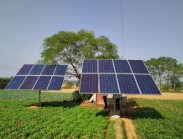As electric vehicles (EVs) gain popularity across the globe, more drivers are shifting toward sustainable transportation. One of the key aspects of EV ownership is understanding how to charge your vehicle efficiently—both at home and while traveling. If you’re new to the EV world, this guide will walk you through the basics of EV charging so you can feel confident hitting the road.
Whether you’re transitioning from a traditional car or considering recycling your vehicle with services like unwanted Car Buyer in Canberra, learning the ropes of EV charging is a smart move toward greener living.
Why EV Charging Knowledge Matters
Electric vehicles are different from traditional fuel-powered cars in more ways than one. While they offer lower running costs and are better for the environment, they also require a shift in how you think about refueling. Instead of pulling into a gas station, you’ll need to plug in—at home, at work, or at a public station.
Charging at Home: Your Personal EV Power Hub
Types of Home Charging
There are two primary types of home charging for EVs:
-
Level 1 Charging: Uses a standard 120-volt outlet. It’s slow but works for overnight charging if your daily mileage is low.
-
Level 2 Charging: Requires a 240-volt outlet and charges significantly faster. Most EV owners install a Level 2 charger at home for convenience.
Installation Tips
To install a Level 2 charger, you’ll likely need a licensed electrician. The cost depends on your home’s electrical system and whether any upgrades are needed. Some governments offer rebates or incentives for EV charger installations, so be sure to check local programs.
Smart Charging Features
Modern chargers often come with smart features like mobile app control, energy tracking, and scheduled charging. These can help you save money by charging during off-peak hours and give you more control over your EV’s energy usage.
On-the-Go Charging: Staying Powered Away from Home
Charging on the go is essential for long trips or when you don’t have access to a home charger. Public charging stations are becoming increasingly common and user-friendly.
Types of Public Charging
-
Level 2 Public Chargers: Found in shopping centers, parking lots, and workplaces. These are great for topping off during errands.
-
DC Fast Chargers: These high-speed chargers can add significant range in just 20–30 minutes. Perfect for road trips.
Charging Networks
Familiarize yourself with popular charging networks like ChargePoint, Tesla Superchargers, and Electrify America. Many offer apps that let you find stations, check availability, and even start charging remotely.
Planning Ahead
Use route-planning tools to map out charging stops during long journeys. Some EVs also have integrated navigation that suggests charging stations based on your remaining battery and destination.
Managing Costs and Charging Etiquette
Charging your EV is generally cheaper than fueling a gasoline car. However, rates can vary depending on where and when you charge.
-
Home Charging: Charging at night during off-peak hours can reduce electricity costs.
-
Public Charging: Some chargers are free, while others charge per kilowatt-hour or per minute. Subscriptions may offer better rates.
Charging etiquette is also important. Don’t leave your EV plugged in longer than necessary, especially at fast-charging stations. Be courteous to fellow EV drivers by moving your car when charging is complete.
Battery Health and Best Practices
To maximize battery life, follow these tips:
-
Avoid letting your battery drop below 10% or charging above 90% regularly.
-
Park in the shade or a garage to avoid temperature extremes.
-
Use scheduled charging to maintain consistent battery health.
As you explore EV ownership, transitioning from an older gas-powered vehicle might also cross your mind. This is where services like Top Car Wreckers Canberra can help by offering convenient options for recycling or selling your old car responsibly.
Safety Considerations for EV Charging
Safety should be a top priority when charging your electric vehicle. Thankfully, modern EVs and charging equipment are designed with built-in safety features. However, here are a few best practices you should always follow:
-
Use Certified Equipment: Always purchase EV chargers from reputable brands and ensure they’re certified by recognized safety authorities (like UL or CE).
-
Avoid Extension Cords: Plug your charger directly into the outlet. Using an extension cord can lead to overheating or fire hazards.
-
Regular Inspections: Periodically inspect your charging cable for wear and tear. Replace any damaged components immediately.
-
Professional Installation: For Level 2 chargers, always hire a qualified electrician who understands EV charging setups.
Staying safe not only protects your property but also extends the lifespan of your charging equipment and your EV’s battery.
Charging for Apartment and Condo Dwellers
If you live in a multi-unit residence, home charging may not be as straightforward—but it’s still possible.
-
Shared Charging Stations: Some buildings have shared EV charging stations in parking garages.
-
Request Installation: In many regions, laws are evolving to support EV infrastructure in residential buildings. Talk to your landlord or homeowners’ association about installing a charger.
-
Portable Level 1 Chargers: You can plug these into any standard outlet, making them ideal for low-mileage drivers without dedicated parking spots.
Access to reliable charging—even without a driveway—can be a reality with some coordination and community planning.
Final Thoughts: Making the Switch Seamless
Switching to an EV is a lifestyle upgrade. With the right knowledge about charging—at home and on the go—you can enjoy all the benefits of electric driving without the range anxiety.
From understanding charging levels to planning road trips with public stations, staying powered up is simpler than ever. Embrace the change, drive responsibly, and take advantage of emerging technologies that make owning an EV both exciting and practical.
Whether you’re just starting your EV journey or looking to make a clean break from your old vehicle, knowing your options will help you move forward confidently and sustainably.

